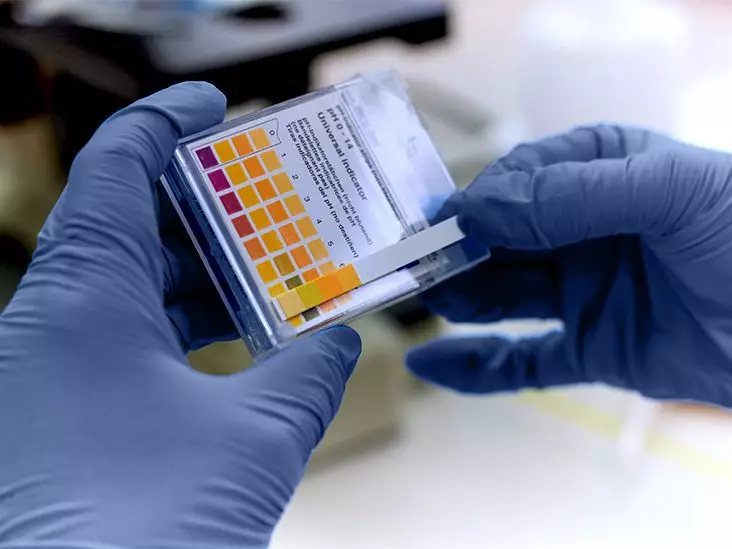Prostate cancer occupies a strikingly paradoxical position within the world of oncology. It is one of the most prominent cancers diagnosed in men, yet it can be efficiently treated if discovered in its nascent stages. Sadly, the odds are not in favor of early detection, largely due to a significant gap in reliable diagnostic methods. The traditional reliance on prostate-specific antigen (PSA) blood tests often leads to ambiguity; elevated PSA levels can signal not only cancer but also benign conditions such as prostate enlargement or inflammation. The absence of precise biomarkers has hindered progress, making it imperative for researchers to identify innovative approaches to better screen at-risk populations.
Recent advancements promise to shift this narrative, particularly with emerging urine-based biomarkers offering a more accurate and less invasive alternative to PSA testing. This research doesn’t merely skim the surface of potential; it embodies a breakthrough that could reshape how we perceive and diagnose prostate cancer.
Innovation Through Artificial Intelligence
Central to this transformative study is the amalgamation of artificial intelligence with intricate genetic analysis. By meticulously evaluating mRNA activity across thousands of tumor cells, researchers are painting a clearer picture of prostate cancer’s biological landscape. This detailed exploration involves classifying tumors based on their grades, locations, and specific genetic signatures.
Using AI research models, scientists identified proteins with promise as biomarkers, eventually validating their findings through extensive testing on blood, urine, and prostate tissue samples collected from around 2,000 patients. Martin Smelik, the study’s lead author, articulated the enthusiasm surrounding this new method: “The key finding of this article is that prostate cancer can be effectively identified by analyzing the expression of candidate biomarkers in urine.” This non-invasive approach significantly reduces discomfort for patients compared to invasive biopsies and costly hospital visits, making it an attractive option for routine screening.
The Advantages of Urine Testing
Urine tests represent a breakthrough for several compelling reasons. First, they are inherently non-invasive and painless—a stark contrast to the psychological and physical toll of needle-based diagnostics. Second, the potential for lower costs associated with urine testing could democratize access to vital prostate cancer screening. The twin goals of financial accessibility and improved patient comfort are crucial in an era where healthcare disparities remain pronounced.
Researchers have tuned their focus on a specific constellation of urine biomarkers that unveil not just the presence of cancer, but also its severity with remarkable accuracy. This ability to differentiate between varying degrees of cancer can vastly enhance clinical decision-making, allowing for individualized treatment plans that respond to the unique biological context of each patient.
Implications for Future Clinical Practice
As the research continues to unfold, experts anticipate that future large-scale clinical trials will validate these findings. Discussions are already surfacing about incorporating these novel urine biomarkers into national prostate cancer screening initiatives, especially in places like the UK. The excitement surrounding these developments is palpable among medical professionals.
Dr. Milan Sheth, a quadruple board-certified physician specializing in oncology, emphasizes the importance of this study. He notes, “Early diagnosis and treatment are critical for preventing such complications.” The prospect of moving away from uncomfortable and invasive testing towards simpler urine tests is refreshing. It aligns medicine with a patient-centered ethos—ultimately paving the way for more comprehensive and less intimidating cancer screening programs.
A New Era for Cancer Research
The implications of this research extend beyond just prostate cancer. While the study primarily focused on one form of cancer, the methodologies employed might be applicable to investigating others, fostering the quest for additional biomarkers across different cancer types. As Dr. Smelik noted, “Some of the methods could be generalized to other cancers as well,” showcasing the potential for further applications within oncology.
Ramkishen Narayanan, a board-certified urologist, underscores the urgency for developments like these, stating that “we are long overdue for additional biomarkers that can both detect prostate cancer and monitor its progression.” Given that PSA testing has remained the quality control standard for almost fifty years, the time for innovation is ripe for the picking.
Researchers and clinicians alike emphasize the need for a collaborative global effort, akin to existing projects like the Cancer Genome Atlas, to expedite these promising avenues of research. With the right focus and investment, the future of prostate cancer detection could boast methods that not only enhance diagnostic precision but also safeguard the dignity and comfort of patients navigating this challenging landscape.


Leave a Reply